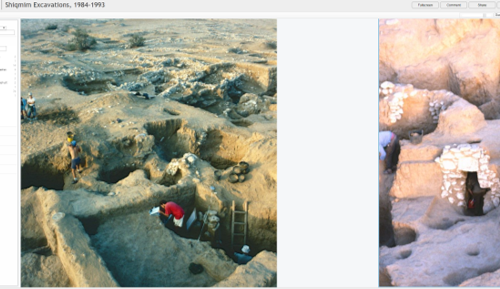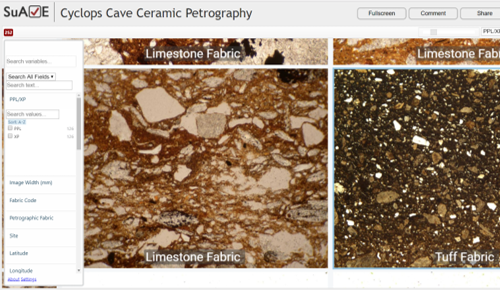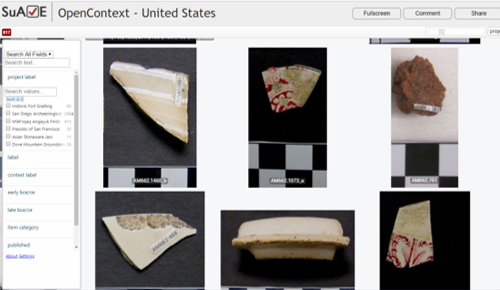SuAVE for Archaeology
SuAVE lets archaeologists organize and visualize many artifacts together, and explore relationships between their characteristics both visually and statistically. SuAVE has been used to show collections of excavation photos, and photomicrographs. We are also experimenting with training machine learning models to identify petrographic fabric on photoceramic thin slices from excavations in the Mediterranean: these models are launched directly from a SuAVE application and return predicted values to SuAVE to help interpret misclassifications and iteratively improve the models.
Excavation photographs. Shiqmim Survey, 1984-93. This collection of archaeological photographs was assembled by UCSD Professor Tom Levy and his team in the course of the Beersheva Valley Chiefdom Project.
Photomicrographs. Cyclops Cave petrographic thin slices and geochemical measurements. This collection of archaeological thin slices from an excavation site in the Mediterranean was created to better understand patterns of ceramics produced or traded in these areas in antiquity. Other petrographic thin slice collections we are exploring come from excavations in Kommos and Northern Negev. This joint work with the UCSD Cyber-archaeology lab and the University College London involves training machine learning models to support the identification of petrographic fabric on unlabeled photomicrographs.
Gallery of artifacts.Sample of archaeological resources maintained by OpenContext. This gallery shows archaeological samples available for the US (as of December 2017) retrieved via OpenContext API.



